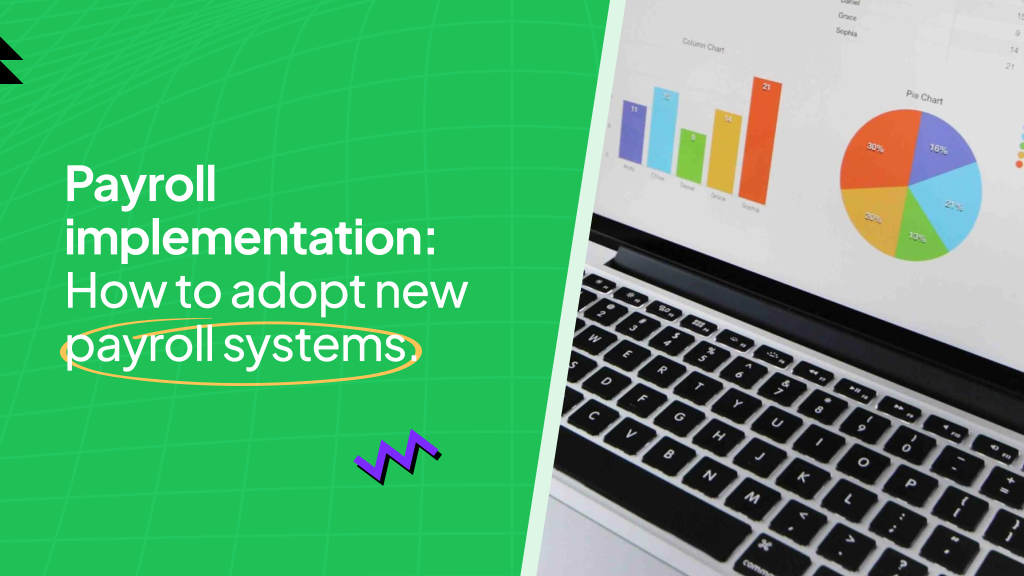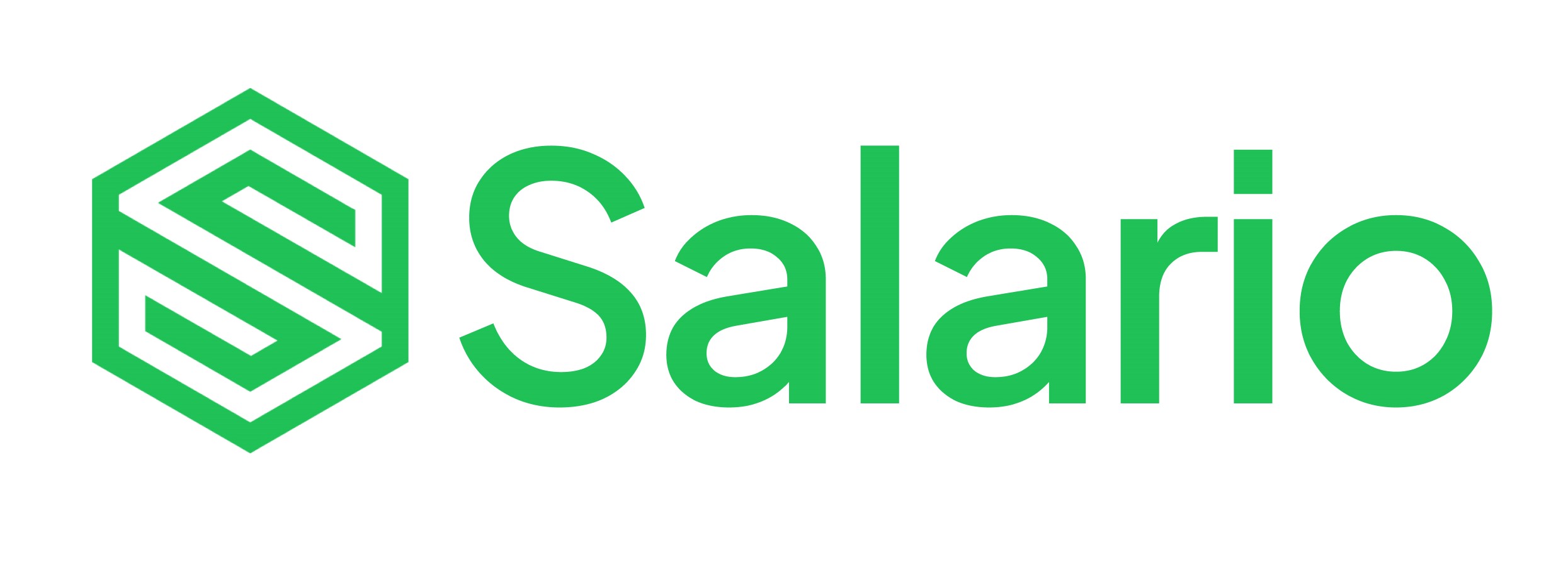
Let’s picture an HR manager in Lagos, Nigeria, tasked with handling payroll for a mid-sized company. For years, the company used a manual payroll system, paper spreadsheets and monthly calculations done with calculators. But as the company grew, payroll became a nightmare. Errors piled up, employee complaints increased, and compliance with tax regulations was harder to ensure. The HR manager knew it was time to switch to an automated payroll system. However, the thought of transitioning to a new system seemed daunting. Would it be expensive? What if it disrupted their already tight payroll schedules?
This scenario is common for many organizations, especially as businesses scale and payroll becomes more complex. Whether you’re an HR manager in Nigeria or a business owner anywhere in the world, adopting a new payroll system can seem overwhelming. But with a structured approach, the transition doesn’t have to be as challenging as it seems.
In this post, we’ll explore how to successfully implement a new payroll system, the potential challenges you might face, and the significant advantages a streamlined payroll system can offer.
Steps for Implementing a New Payroll System
Transitioning to a new payroll system involves more than just picking software and signing up. It requires a detailed and structured process that ensures a smooth transition. Here’s a step-by-step guide to how to do it right:
1. Evaluate Your Current Payroll Process
Before you can implement a new payroll system, it’s important to understand what’s wrong with your current system. Are there frequent errors? Is it time-consuming? Do employees complain about late or inaccurate payments? Conducting an internal audit of your existing payroll processes will help you identify pain points and gaps that the new system should address.
Additionally, ensure you clearly understand your company’s payroll needs, such as:
- The number of employees
- Employee classifications (full-time, part-time, contractors)
- Frequency of payroll (weekly, bi-weekly, monthly)
- Tax obligations and regulatory compliance
A thorough evaluation of these factors will guide you in choosing the right system tailored to your company’s unique needs.
2. Choose the Right Payroll System
Choosing the right payroll system is a crucial step in the process. Various payroll solutions are available, ranging from basic systems for small businesses to comprehensive platforms for large enterprises. Consider the following when selecting a payroll system:
- Scalability: Will the system grow with your business? If you plan to expand your workforce, choose a system accommodating that growth.
- Integration: Can the new system integrate with your existing software, such as HR management systems or accounting software?
- Compliance: Ensure the system complies with local tax and labor laws and other regulations.
- User-friendliness: A complicated system can slow down your payroll process. Opt for one with an intuitive interface and clear instructions.
For example, Salario offers a robust payroll solution tailored to the specific needs of Nigerian businesses. Its features ensure compliance with local tax regulations and are complemented by an easy-to-use platform.
3. Set a Realistic Timeline

Payroll implementation doesn’t happen overnight. Setting a realistic timeline is essential for a smooth transition. Depending on the system’s complexity and your company’s size, the process may take weeks or even months. Work with the payroll software provider to establish a timeline that includes key milestones such as:
- Data migration and verification
- Employee training
- Initial testing and troubleshooting
Rushing the implementation can lead to errors, so take the time to do it right.
4. Data Migration
One of the trickiest aspects of payroll implementation is migrating data from the old system to the new one. This includes employee records, salary details, deductions, tax withholdings, and other payroll-related information.
Before migrating, clean up your existing data. Remove outdated information and correct any inaccuracies to ensure a smooth transition. Many payroll software providers, including Salario, offer support during the data migration process, ensuring that all your employee data is correctly transferred and set up.
5. Training Your Payroll Team
Once the new system is set up, the payroll team needs to be trained on how to use it effectively. The new system’s success depends largely on the proficiency of the people operating it. Conduct detailed training sessions for payroll staff to ensure they understand how to:
- Input employee data
- Generate pay stubs
- Calculate taxes and deductions
- Handle compliance requirements
Many software providers offer comprehensive onboarding and training resources to help your team get up to speed quickly.
6. Run Parallel Payrolls
Before fully switching to the new system, it’s a good idea to run a few parallel payrolls. This means simultaneously processing payroll through the old and new systems to compare the results. This helps identify any discrepancies or errors before you rely solely on the new system.
Parallel payroll runs also familiarize employees with the new system’s output, including new pay stubs or direct deposit procedures.
7. Go Live and Monitor
Once you’ve completed data migration and testing, it’s time to go live with the new system. However, the work doesn’t end there. Closely monitor the system during the first few pay cycles to ensure everything functions as expected. Watch out for issues that could disrupt payroll processing, such as incorrect deductions or miscalculated overtime.
Continuous monitoring helps ensure the system remains efficient and catches problems early before they impact employee satisfaction.
Common Challenges in Payroll Implementation
Even with a detailed plan, payroll implementation can face its fair share of challenges. Here are some of the most common issues businesses encounter and how to address them:
1. Resistance to Change

One of the biggest obstacles to implementing a new payroll system is resistance from employees, especially those who have been using the old system for years. Employees may be reluctant to adapt to new processes, especially if they’re not involved in the transition process.
Solution: Address this challenge by involving your payroll staff early in the process. Tell them why the change is necessary and how it will benefit the company. Offering extensive training and support will also make the transition smoother.
2. Data Migration Issues
Migrating data from one system to another is complex, and even minor errors can result in significant payroll discrepancies. Missing or inaccurate data can lead to problems like underpayment, overpayment, or even non-compliance with tax regulations.
Solution: Review and clean your data before starting the migration process. Work with the payroll software provider to ensure the migration is accurate and complete. Running parallel payrolls can help catch any issues early.
3. Integration with Other Systems
Many companies use multiple software systems for HR, accounting, and payroll. Integrating the new payroll system with these existing systems can sometimes be challenging, leading to data inconsistencies and inefficiencies.
Solution: Choose a payroll system that integrates seamlessly with your existing tools. Ensure that the provider offers technical support to assist with integration issues.
4. Compliance Concerns
Payroll compliance is one of the most critical aspects of payroll management. Different countries and regions have varying tax laws and labor regulations. For example, Nigerian businesses must comply with regulations set by the Federal Inland Revenue Service (FIRS) and other local tax bodies. A failure to comply can lead to penalties.
Solution: Make sure the new payroll system is regularly updated to reflect changes in tax laws or labor regulations. Automated payroll systems like Salario ensure compliance by automatically updating tax tables and generating accurate payroll reports.
Advantages of Implementing a New Payroll System
Despite the challenges, the benefits of adopting a new payroll system far outweigh the difficulties. Here are some of the key advantages:
1. Increased Efficiency and Accuracy
Automated payroll systems significantly reduce the likelihood of errors associated with manual processes. The system automatically calculates wages, deductions, and taxes, minimizing the likelihood of mistakes. This saves time and ensures that employees are paid accurately and on time.
2. Enhanced Compliance
Payroll systems are designed to keep your business compliant with tax and labor regulations. Many systems provide automatic updates when tax laws change, guaranteeing your compliance with the law at all times. This is especially important for businesses operating in regions with complex tax laws, such as Nigeria, where they must comply with both federal and state tax regulations.
3. Cost Savings

While the initial investment in a payroll system may seem high, the long-term savings are significant. Automation reduces the need for manual labor, reduces costly errors, and ensures compliance, preventing potential fines or penalties.
4. Employee Satisfaction
An accurate and timely payroll system is one of the key drivers of employee satisfaction. Employees consistently paid on time and accurately are more likely to be engaged and motivated. A new payroll system can also offer self-service options, allowing employees to view their pay stubs and manage their tax information without involving the HR team.
5. Data Security
Payroll data usually contains confidential information that, if released, could cause serious harm to employees. A new payroll system allows cybersecurity experts and HR personnel to review existing data security measures and concern and how the new system can improve on data security.
Conclusion
Implementing a new payroll system may seem like a daunting task, but with the right approach, it can be a seamless and highly beneficial transition. You can ensure a successful implementation by following a structured process, which involves evaluating your current system, selecting the right software, ensuring proper data migration, and training your team.
For businesses looking for a comprehensive payroll solution, Salario offers a system tailored to the needs of businesses in Nigeria and beyond. With features that ensure compliance, increase efficiency, and enhance employee satisfaction, Salario can simplify payroll management and drive business success.
